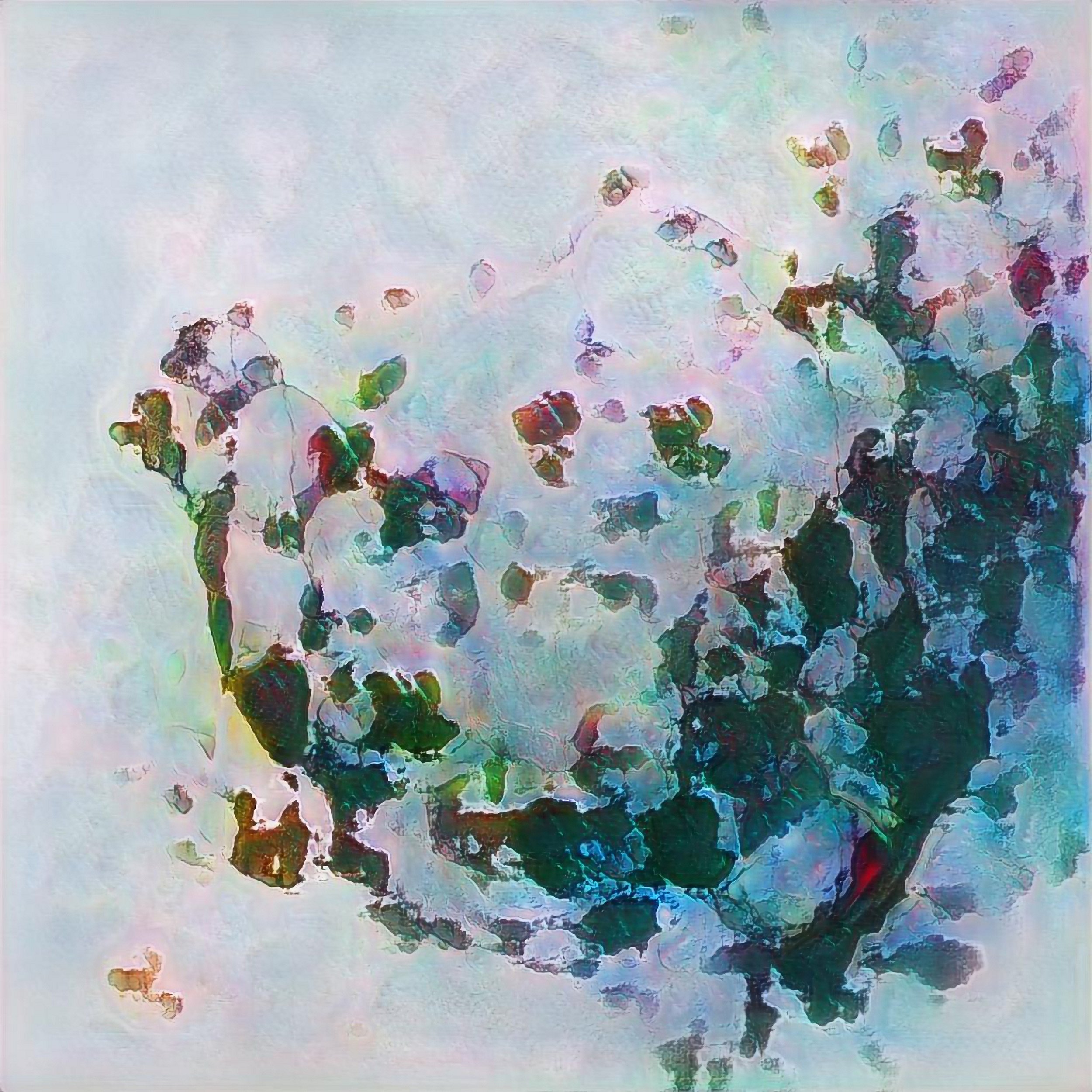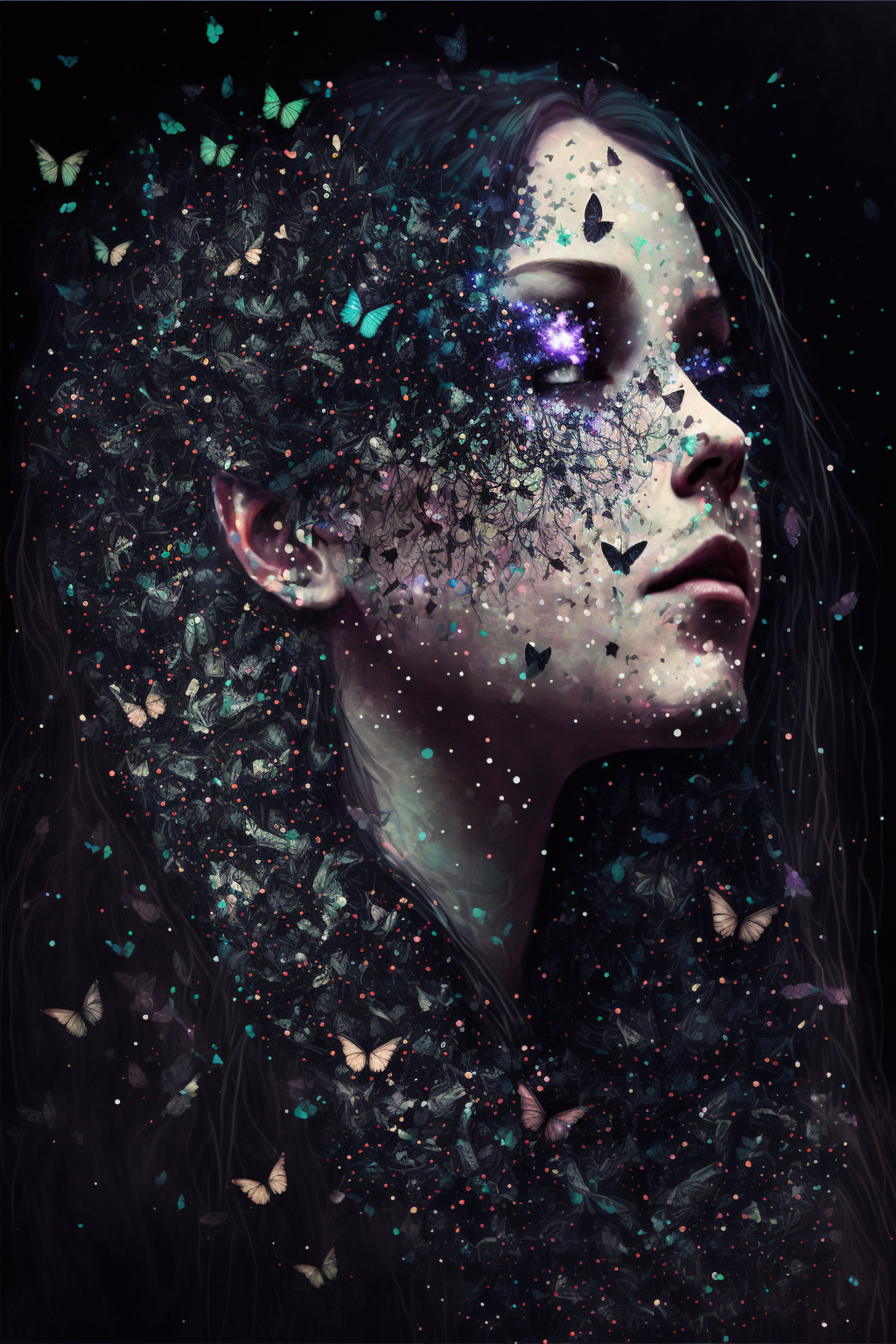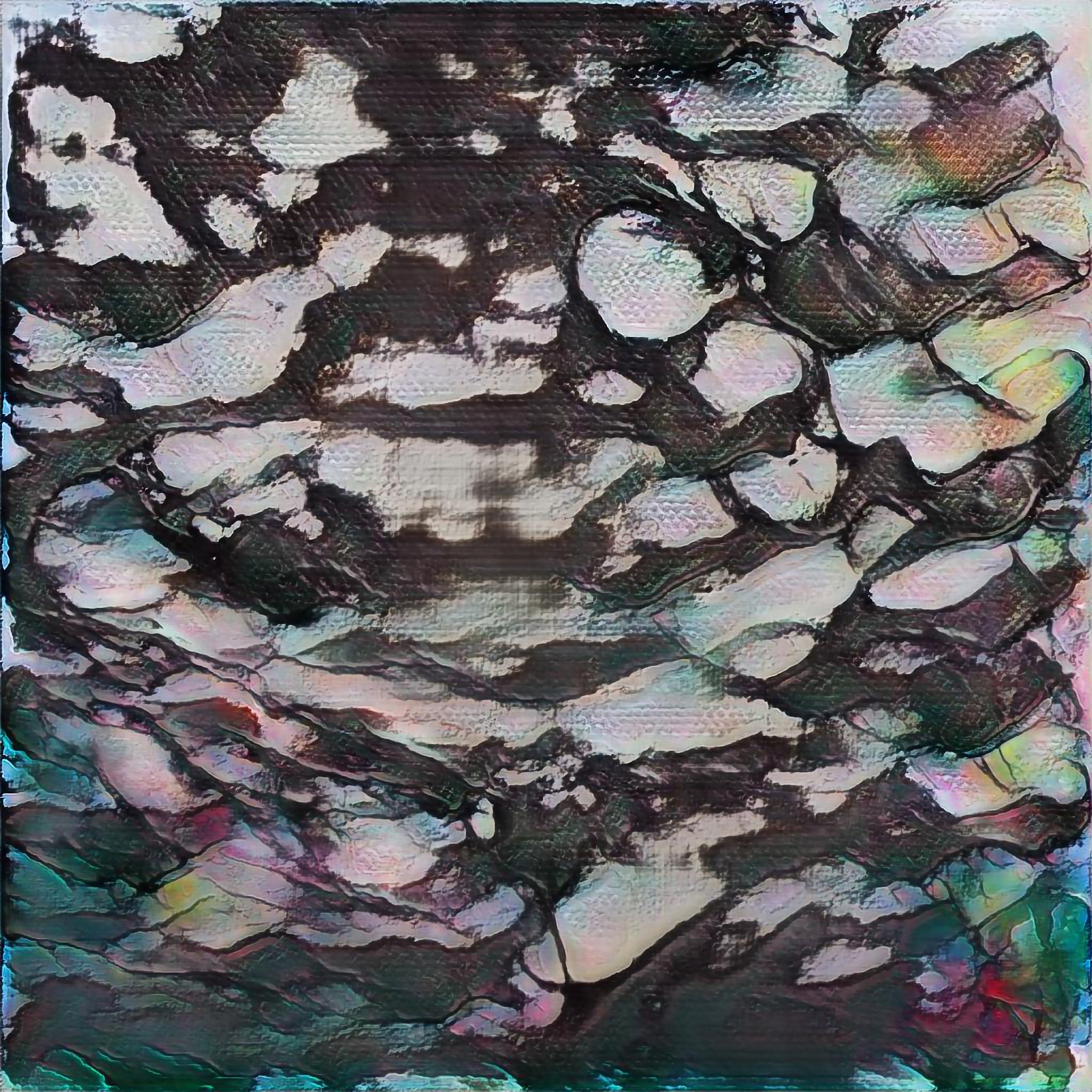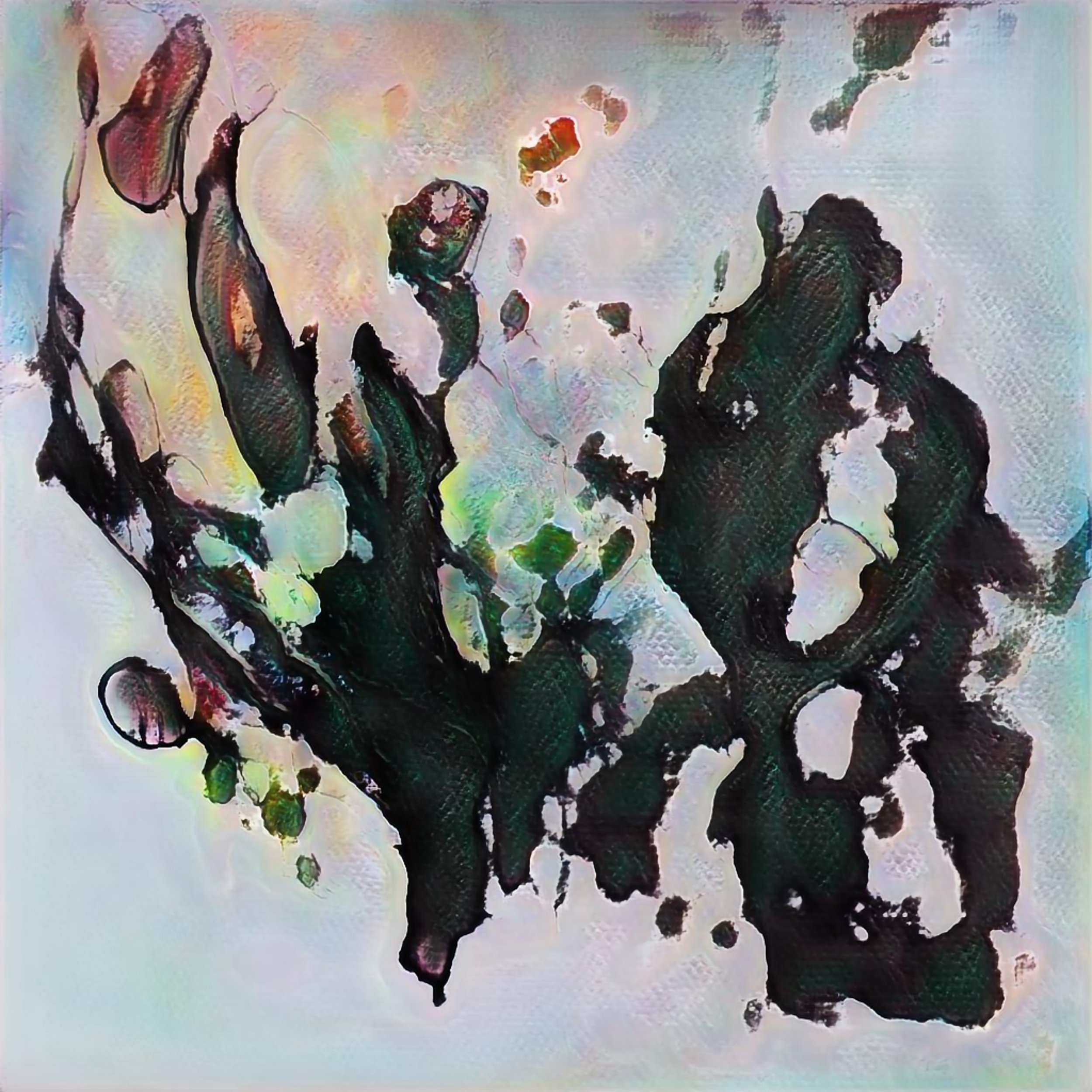AI Art School
Curious about AI in art? Want to learn how to use AI in your established art practice, or to use AI for creative expression with no prior skills required? Join me…
I’ve started teaching classes about how to use AI in your creative practice! I’m really excited about this, because I want to share the magic that I sensed with AI in my own art practice with other artists, and develop the use of creative AI as a tool for reflective practice for anyone.
I’ll be teaching these first classes with a newly formed AI Art School, and if you’re interested in learning, there are two courses right now - one for fine artists, who already have a body of work, and one for anyone who wants to learn to use AI as a tool for creative expression. These are beginner level courses, so if you’re totally confused, or curious but don’t know where or how to start, these are for you!
The link below will take you to Rebecca Tolk’s website for further information and check out, don’t be alarmed, this is correct! I’m teaching the evening cohort of the AI for Creative Expression course, so click on that sign-up link to learn with me as your guide!
Let me tell you about my new romance…
I joined the virtual studio at Playform, and am currently working on a project based on recent collected works. I was truly excited to discover this platform for creating AI art, and maybe have previously underestimated my love for all things digital?
In thinking about it, I realized that I can trace my digital art-making back to my video painter, and maybe back to those days in kindergarten when we had computer class, and got to make art on the Macs? I'm one of those millennials who didn't have to be tech-savvy - we didn't have the internet until around when I went to college. I didn't even know I was tech-savvy until somewhere in my 30's and I realized I was giving out a lot of help, and it was surprising to me that people didn't understand it. Now, I would definitely consider myself an early adopter. It makes sense that I am because I feel ridiculously excited about the potential I see. Partially because exploring that potential gives me such a sense of joy. I think this is deeply related to radical hope. It's not something that exists here yet, but I can feel its existence. I noted that same sense of joy was frequently present when editing photographs, playing with texture and color, layers, versions...
These explorations are my way of studying, understanding something more. It feels like a word I can't recall, a place I can't remember my way to - It is so strong, but it is also emptiness. The matter is in the relationship, in the space between. The Playform platform is a tool to help me explore this space!
How does it work? There are computers that the platform is connected to, and I uploaded around 50 of my works of art. The computers essentially then learn those images, the forms, lines, colors, etc., and create renderings of new work. Those renderings can be further developed, mixed, and used in ways I haven't even discovered all of yet.
Developing models on Playform
I'm (obviously) enthusiastic about this new digital tool, and how it truly fits into my work.
Case in point - The other day, I was just sitting in my studio, smiling to myself thinking about Arthur Batut and his ideas on virtuality.
"To reproduce with the help of photography a figure whose material reality does not exist anywhere, an unreal being whose constituent elements are scattered over a certain number of individuals and which can only be conceived virtually, is it not a dream?" - Arthur Batut (translated from French)
Ah, so thrilling! Did I mention Batut lived from 1846 to 1918? What would he even think of something like Playform? We can't know the answer, but I'd love to hear yours!
Being sensitive, holding space, and radical hope.
For a long time, I would be disappointed by people for their actions. I couldn’t understand it and I always felt let down by their behavior, as incongruous to how I saw them. Not all that many years ago, I realized that this is because how I saw them was incongruous with how they actually were - and that my mistake is inherent in how I use what I see. How to put it? I’m sensitive. Not just in the way that got me made fun of growing up, but also in the way that I have access to other pieces of information that aren’t exactly within the “normal” range of experience. Some of these things are categorized as psychic and/or empathic abilities, like being able to actually feel what someone else is feeling, in my body. And all of this information can be really confusing and overwhelming - especially when it’s all tangled up with trauma and unhealthy dynamics. But back to what I came to understand about my experience of other people, I realized that I am able to tune in to who a person really is, and I experience this knowledge at a feeling level.
There are ways of knowing that are intuitive, and the more we learn to use them, the more we come to understand about ourselves, our relationships, and our world. I think that artists are in tune with these abilities in different ways. Learning that I have a strength when it comes to claircognizance (knowing) and clairsentience (feeling), has been very helpful to me. Now, when I meet people, I know that the sense I get of them has more to do with their greatest potential than the level they actually operate on. I’m able to stay out of situations where I, because of my empathy, obliger tendency, and familial relationship templates, would be blindsided and taken advantage of. I know more of a difference between who I am, what I’m feeling, and who someone else is. That might sound crazy, but if you’re able to pick up on all kinds of information and don’t know how to/ can’t process it, it can be VERY confusing.
To parse out all of this info that’s coming in, I needed to put boundaries in place. I needed to have help and support creating a practice. It has to remain in place this way for me to just feel semi-ok. Lately, it’s hard. I want to hit pause on everything and just paint and process. Just staying grounded and mindful is much of my self-care.
The idea of radical hope has been getting me through. It’s been so important to me at the core, and the more I contemplate, the more I realize that radical hope is at the very foundation of who I am. It is tied to the reason that I sense people’s potential state, not just the current one. It’s the reason that I can know, absolutely, in my bones that something is righteous. (Not that I am right, but that a concept has a righteous feeling, I think about it, and my body just knows). It’s like having a sense of direction, knowing which way is North. I’m just orientated to a different set of parameters that is intuitively defined, and the concept of radical hope is a compass.
Radical hope is essentially having hope in situations that have absolutely no hope. Radical hope is wise hope, not toxic positivity. It is a hope that doesn’t deny the reality of our suffering, but chooses to see it all, and take action.
Writings by Joan Halifax, Rebecca Solnit, and Jonathan Lear explore this subject further. I find the concept of radical hope to be in alignment with Catholic social justice teachings, and present in the punk rock community. It’s active. It’s defiant. It’s also very present in post traumatic growth, where there is space, often uncomfortable space, between what happened, what is, and what will be. It is in this space that we may act. This is what my work is all about. Holding space for the truth and the capacity to transform it. Radical hope.
What a great realization to have.
I have known that the work I do is about holding space - for people in portraits, in installation work of shrines and imitation relics. There is repetition of information, movement, shifting of forms. These constants have existed, and I can only see them now that I look backwards through time and media and a plethora of projects. I’ve focused on the beauty of an individual, seeing what makes them true. I’ve created experiences - literal spaces to be in, and prompted an ignition of radical hope in the face of systemic injustice. I’ve made bowls filled with intention and set them on fire. I’ve sought community through my work, connection to others to create a shift. I’ve tried time and time and time again to capture visually, something that I know in my bones, that I feel and experience, that is completely invisible and goes back to the concept of space. It is wild how filled with radical hope it always was, and how I lacked the descriptive words to say it. I have them now.
My work is about radical hope, and I want to share that with you.
Visual Language Exploration: Portrait Pink
If you find a photo of me, any time before I was like 12, I’m probably wearing mostly pink. I thought all little girls loved it, but apparently people actually remembered that I wore so much of it. Maybe it was my light blonde hair and pink hair accessories that went with my pink winter coat and my pink my little pony lunch box?
No matter, I was out of the pink phase for a very long time. I remember a few different color phases, like this pale frosty blue that went with shimmery makeup and lots of glitter. It reminded me of ice and magic and the sky. Or the bright yellow of my great grandma’s vintage sweaters phase. Oh, and black and I have such a relationship... We’ll dive into those depths another day, because as it is, I’m in love with pink all over again .
So this is where I’m starting the discussion on the exploration of my visual language - with pink.
Color theory was one of my favorite classes in art school, and then, when I was in graduate classes for art therapy, I got to study color a whole other way. While we all pretty much have favorite colors, or colors we don’t like, many people don’t give a lot of thought as to why. A funny thing is how parents are concerned when their kid likes black - but often times kids LOVE black because it’s bold and stands out. They’re not associating anything with it that their parents are.
There are universal associations to color, line, shape, etc., but there are also deeply personal ones, and our own languages are a web of both. It was incredibly interesting to me to look at these through the lens of an art therapist. I learned to see how color connects us as a whole, and defines us as individuals, helps us tell our story.
Here’s an interesting read on the history of pink - from how it switched from being traditionally a boys color to being associated with gayness because of labeling by the Nazi regime, and to being a calming or demeaning color used for control in prisons.
For me, I think I’ve reconnected to using the color pink so much in my work because of my associations with it as a color of sensitivity and vulnerability. It is a color connected to our bodies, scars, tissue, inner things. It is connected with my inner child as well, whom always wears pink, and with whom I am healing. As to whether or not pink is calming, it entirely depends on the shade and intensity. Portrait pink is calming for me, it’s deep enough that I find it grounding, connecting to my inner self within the world. It holds the warmth of bodies. It feels like breathing, slowly. It pairs well with a soft cream blanket, or my closet full of black. I think it connects me throughout my existence, grounding me in my experiences, a thread through time. Oh, and I also love it’s juxtaposition to red. I feel like it was a rule somewhere, that you weren’t to wear red and pink together. I guess it’s dangerous if you don’t know how to choose your reds and pinks? But there’s a boldness in that combination that establishes something solid. Let’s channel Molly Ringwald for a sec. You feeling it?
It makes perfect sense then that I’ve been painting so much with this in my color palette, because my work is so much about holding space and growth, which require vulnerability. The process requires acceptance and not judging what comes into the self and the work. It’s treated with a softness that says - this is just what is, and this is okay. I’m sitting across from a very visceral painting right now, where deep red womb-like shape drips with heaviness upon a field of pink. It acknowledges the heaviness, the bleeding, growth, pain, etc. all with acceptance. The field is soft, and it’s okay to be there.
I think we’re also having a cultural moment that is resonating with this color, as part of women’s rights advancements, and the collective energy of women coming forward, using their voices, and claiming space. Probably for a lot of the reasons I listed for my personal use of the color. There is a connection from the micro/within to the macro/external, and it’s color is portrait pink.
FEATURED POSTS












































